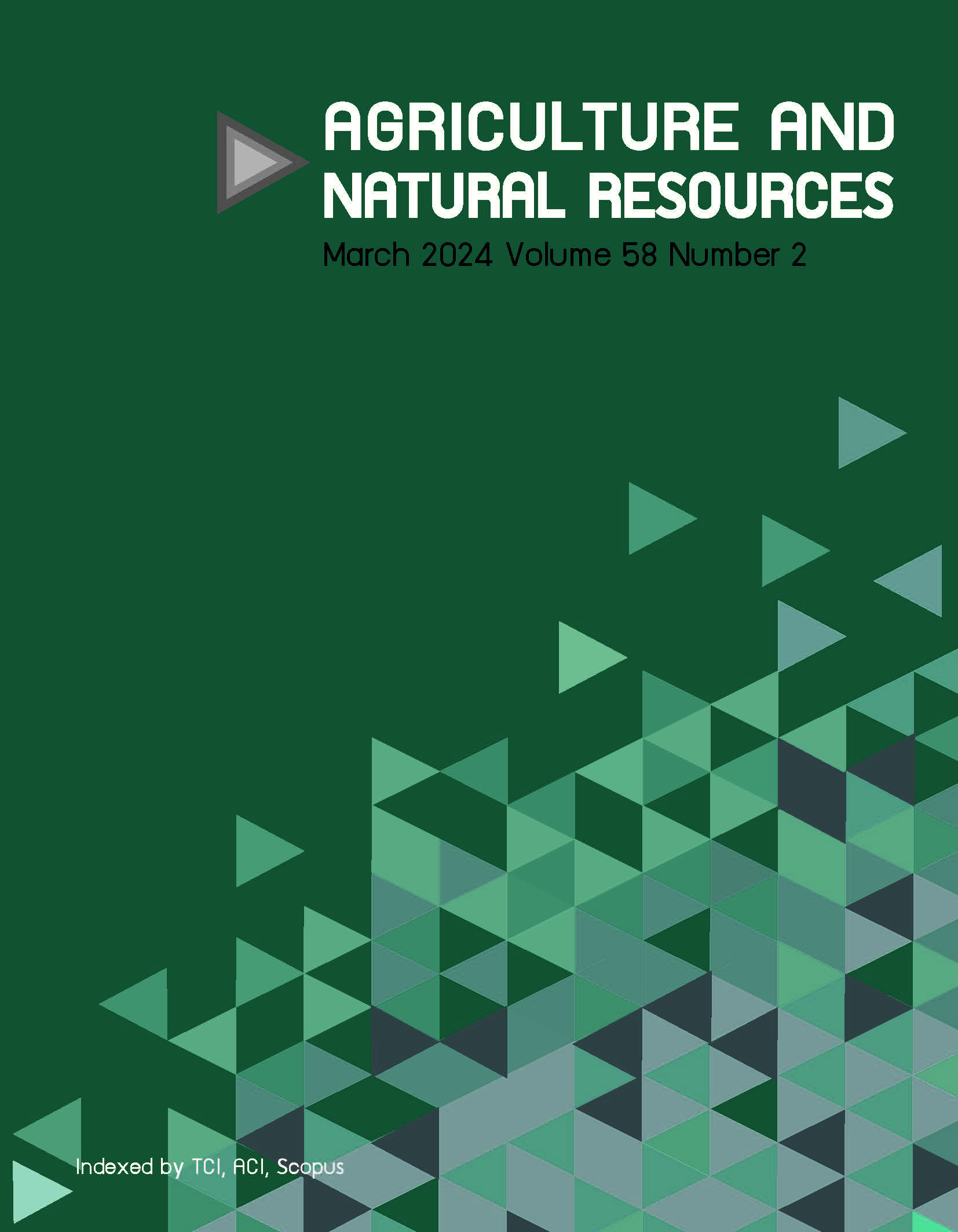Vanillin extraction from Thai vanilla pods using ohmic heating followed by ultrasound- or microwave-assisted extraction
Keywords:
Natural extract, Pretreatment, Solvent extraction, Vanilla bean, Vanilla planifoliaAbstract
Importance of the work: Typically, vanilla extract is used to enhance the flavor and taste of foods and beverages. With the rising demand for natural extracts, several extraction technologies were explored to improve extraction efficiency and preserve the extract quality.
Objectives: Ohmic heating extraction (OHE) was investigated as a pretreatment for vanilla extraction followed by conventional extraction (CE), ultrasound-assisted extraction (UAE) and microwave-assisted extraction (MAE).
Materials & Methods: Vanilla pods were subjected to various methods (CE, UAE or MAE) without and with OHE as a pretreatment. The extraction conditions were carried out at 55°C using 1:10 (weight per volume) of vanilla pods and 35% ethanol. The vanilla extracts were compared for their vanillin content, antioxidant activities—using 2,2’-diphenyl-1-picrylhydrazyl (DPPH), 2,2’-azino-bis (3-ethylbenzothiazoline-6-sulfonic acid) (ABTS) and ferric ion reducing antioxidant power (FRAP) assays)—and electronic nose profiles to identify the best method in terms of extraction efficiency and extract quality.
Results: The highest vanillin content was produced using CE; however, UAE substantially shortened the extraction time from 12 hr to 0.25 hr. The highest vanillin extraction efficiency was from using OHE, which also created pores on the vanilla pods as was evident from the various pore sizes that appeared on the surface. When OHE was applied before further extraction, a higher amount of vanillin was obtained than without pretreatment, specifically 55.68% for OHE+UAE and 34.39% for OHE+MAE. Nonetheless, the antioxidant capacities of the OHE+CE extracts were the highest based on the DPPH, ABTS and FRAP assays. Odor analysis based on E-nose analysis identified vanillin, benzaldehyde and furfural as the chemicals with high relevance index values.
Main finding: OHE showed potential as a rapid pretreatment method to improve vanillin extraction while maintaining antioxidant activity. Combined OHE and UAE substantially improved the extraction efficiency.
Downloads
Published
How to Cite
Issue
Section
License
Copyright (c) 2024 Kasetsart Universityonline 2452-316X print 2468-1458/Copyright © 2022. This is an open access article under the CC BY-NC-ND license (http://creativecommons.org/licenses/by-nc-nd/4.0/),
production and hosting by Kasetsart University of Research and Development Institute on behalf of Kasetsart University.







